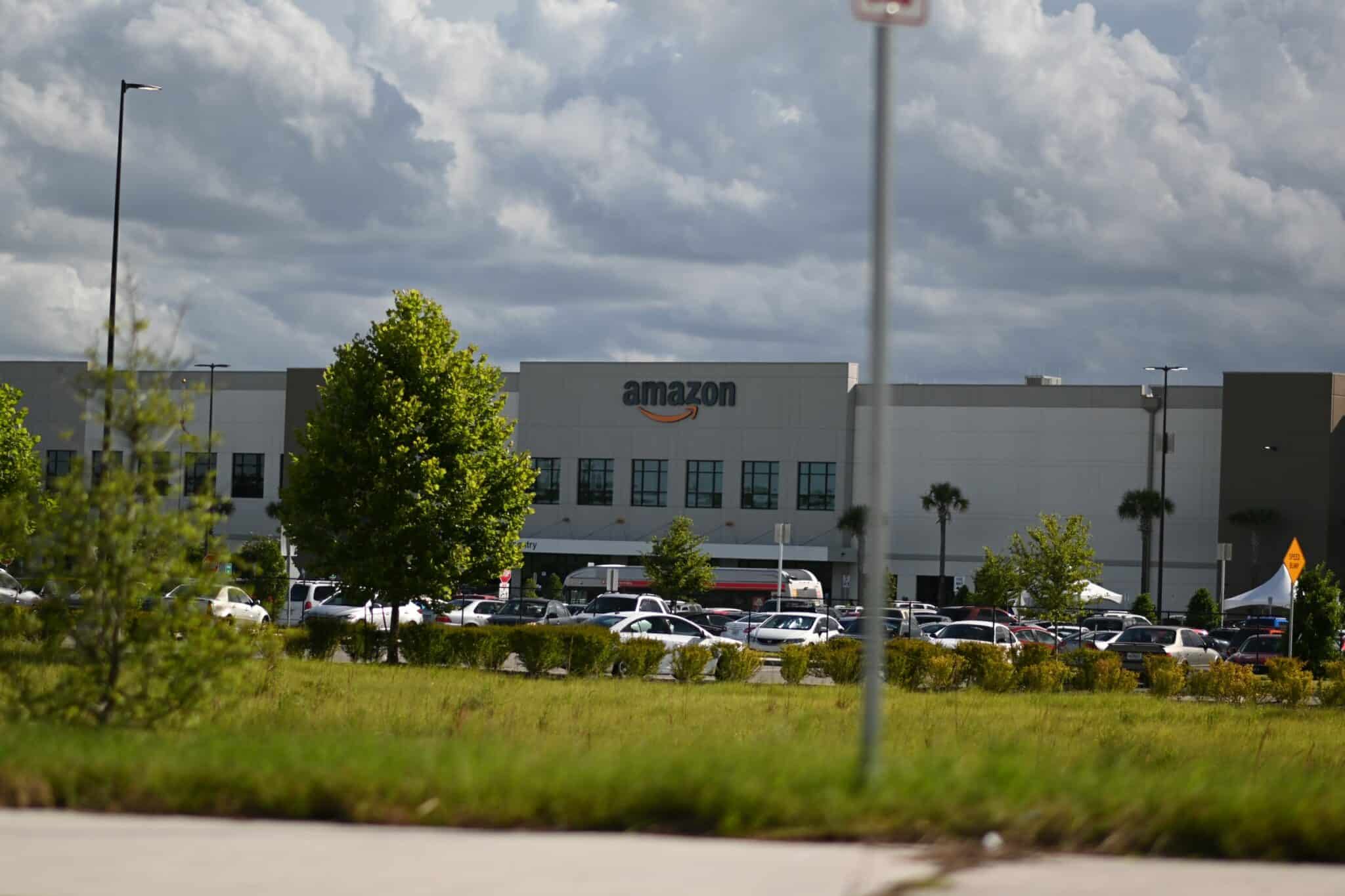
Kevin Vazquez is a staff attorney at the International Brotherhood of Teamsters. He graduated from Harvard Law School in 2023. The opinions he expresses on this blog are his own and should not be attributed to the IBT.
On Friday morning, Amazon workers won a union. The much-anticipated Staten Island organizing drive culminated in an astonishing victory at the NLRB’s New York office, with 2,654 voters – more than 55% — voting “yes” to being represented by the Amazon Labor Union (ALU) and 2,131 voting “no.” The Staten Island warehouse is the first unionized Amazon facility in North America, and the newly minted bargaining unit, which, according to the NLRB, consists of 8,325 workers, is one of the largest to win recognition in an NLRB election in modern American history. Much has already been written, including here in OnLabor, about not only the incredible odds surmounted by the independent ALU – led by Chris Smalls, an Amazon worker dismissed for protesting the company’s Covid policies in March 2020 and subjected to racist abuse and derision by Amazon’s lawyers – but also the extraordinarily wide-reaching consequences the successful union campaign will have on the labor movement in other Amazon facilities and beyond. It is unnecessary – though tempting – to restate those laudations here, and it will suffice to merely point readers to other writings on the subject, such as Labor Notes’ Friday article, Sunday’s Jacobin essay, this piece in the Forge penned by a labor organizer, or even the Wall Street Journal’s clear-eyed coverage. In sum, it was a historic, unprecedented, and largely unpredictable victory that has changed the contours of labor organizing in the U.S. and will reverberate across the country in the months and years to come.
Amazon – unsurprisingly, considering the exorbitant amounts of money and effort it had expended to ensure the opposite outcome – expressed disappointment at the union’s victory, issuing a response on Friday saying, “because [it] believe[s] having a direct relationship with the company is best for [its] employees,” it is “evaluating [its] options, including filing objections based on the inappropriate and undue influence by the NLRB.” Its objections seem to stem primarily from a lawsuit filed by the NLRB last month seeking to reinstate a fired employee at the warehouse, which Amazon claims was an overt attempt to influence the election. These objections will wind their way through a lengthy and cumbersome process, beginning with an NLRB appeal and ending with appellate review in a federal court of appeals (before potentially arriving at the Supreme Court, which would be an ominous outcome).
In any event, once the election results are certified by the NLRB, Amazon will have a legal obligation to bargain in good faith with ALU under sec. 8(a)(5) of the NLRA, and the union is already demanding bargaining dates for contract negotiations with Amazon management. If history is any indication, however, the fight for a first contract could ultimately prove as protracted and intense a battle as the union campaign itself – and the stakes just as high. ALU organizers have said that their primary objective is to increase hourly wages for all warehouse workers to a minimum of $30 per hour (well above Amazon’s current average hourly pay, which sits at $18), though they also intend to push for longer breaks during work and greater worker control over scheduling, in addition to, of course, just-cause protection from dismissal. Amazon has every incentive to vigorously resist these union demands, particularly as it seeks to stave off other union campaigns – recognizing, as it must, that a robust collective bargaining agreement would be powerful ammunition for future organization in Amazon’s facilities. Conversely, from ALU’s perspective, a strong contract could, by demonstrating the value of collective bargaining to workers, bolster its future organizing efforts and serve as a blueprint for later negotiations. The bargaining is certainly going to be highly contentious and fraught with tension, and much of its resolution depends upon the relative strength and leverage exhibited by either side, which, as of now, remains unclear.
So far, only a handful (although the list is growing) of Democratic members of Congress – and zero Republicans – have commented on the Amazon workers’ victory. For live updates, More Perfect Union has created a tracker that maps what members of Congress have said about the election results.
In Bessemer’s rerun election in Alabama, the final results also remain unclear. More than 400 challenged ballots, which will determine the election’s outcome, are being investigated by the NLRB and litigated by both sides. About 52% of the counted ballots have thus far voted against joining the Retail, Wholesale and Department Store Union (RWDSU), but the number of challenged ballots is sufficient to change the outcome. The NLRB’s determination of the final vote tally will likely take weeks as both the union and the company dispute which ballots should be counted, and which should be discarded.
In other news, an impressive cadre of A-list celebrities have come under fire for crossing a picket line earlier this week to attend a party hosted by Jay-Z at the Chateau Marmont in Los Angeles. Nearly 100 former employees, hotel union members, and other activists, projecting a massive “Boycott” logo across the exterior of the hotel, arrived to picket the event in the aftermath of Jay-Z’s refusal to move it to a new location. UNITE HERE Local 11 has led a boycott of the hotel since last year (and publicly appealed to Jay-Z to respect the boycott by relocating his jamboree) after dozens of staffers revealed longstanding, festering issues of worker abuse, discrimination, and harassment occurring on the premises, and the NLRB charged hotel management with violating labor law. Undeterred by the picketers, esteemed celebrity guests – including Janelle Monáe, Emily Ratajkowski, Kim Kardashian, Timothée Chalamet, Rosario Dawson (though she disputes this account), Michael B. Jordan, Zoë Kravitz, Rihanna, DJ Khaled, Mindy Kaling, and even Questlove – swarmed into the hotel’s doors as abused and disappointed former employees watched from the outside, an unsurprising but disappointing failure of Hollywood’s elite, many of whom openly profess fealty to progressive politics, to show solidarity with the workers who make their luxurious lifestyles possible.
Finally, on Friday, the tenth – and, thus far, the largest – Starbucks store voted to unionize in an NLRB election. Workers at the company’s flagship store in Manhattan voted, 46-36, to join Starbucks Workers United. Besides being a flagship location, the Manhattan store is one of only three Starbucks roasteries in the country – i.e., an arm of the company’s manufacturing, rather than merely distributional, apparatus – and it has almost 100 employees, far more than an average Starbucks. All these features make the union’s success at the location not only an important milestone for the union but also a strong indication of its propensity for sustained future success in different Starbucks locations and its widespread resonance with a variety of the company’s workers.
The Starbucks union organizing movement, which has spread to 185 locations in almost 30 states, continues apace, and those interested in a comprehensive, worker-centered exploration of the union, its strategies and goals, and its importance to the modern labor movement (or just a summary of the dizzying number of stores that have filed for elections) can find it all in Vox’s Saturday piece, “How a bunch of Starbucks baristas built a labor movement.” It is an inspiring and informative weekend read that emphasizes organizing tactics, labor law and its discontents, and the everyday stories of Starbucks workers determined to collectively improve their lives and resist the seemingly invulnerable strength of their colossal employer.






Daily News & Commentary
Start your day with our roundup of the latest labor developments. See all
July 11
Regional director orders election without Board quorum; 9th Circuit pauses injunction on Executive Order; Driverless car legislation in Massachusetts
July 10
Wisconsin Supreme Court holds UW Health nurses are not covered by Wisconsin’s Labor Peace Act; a district judge denies the request to stay an injunction pending appeal; the NFLPA appeals an arbitration decision.
July 9
In Today’s News and Commentary, the Supreme Court green-lights mass firings of federal workers, the Agricultural Secretary suggests Medicaid recipients can replace deported farm workers, and DHS ends Temporary Protected Status for Hondurans and Nicaraguans. In an 8-1 emergency docket decision released yesterday afternoon, the Supreme Court lifted an injunction by U.S. District Judge Susan […]
July 8
In today’s news and commentary, Apple wins at the Fifth Circuit against the NLRB, Florida enacts a noncompete-friendly law, and complications with the No Tax on Tips in the Big Beautiful Bill. Apple won an appeal overturning a National Labor Relations Board (NLRB) decision that the company violated labor law by coercively questioning an employee […]
July 7
LA economy deals with fallout from ICE raids; a new appeal challenges the NCAA antitrust settlement; and the EPA places dissenting employees on leave.
July 6
Municipal workers in Philadelphia continue to strike; Zohran Mamdani collects union endorsements; UFCW grocery workers in California and Colorado reach tentative agreements.